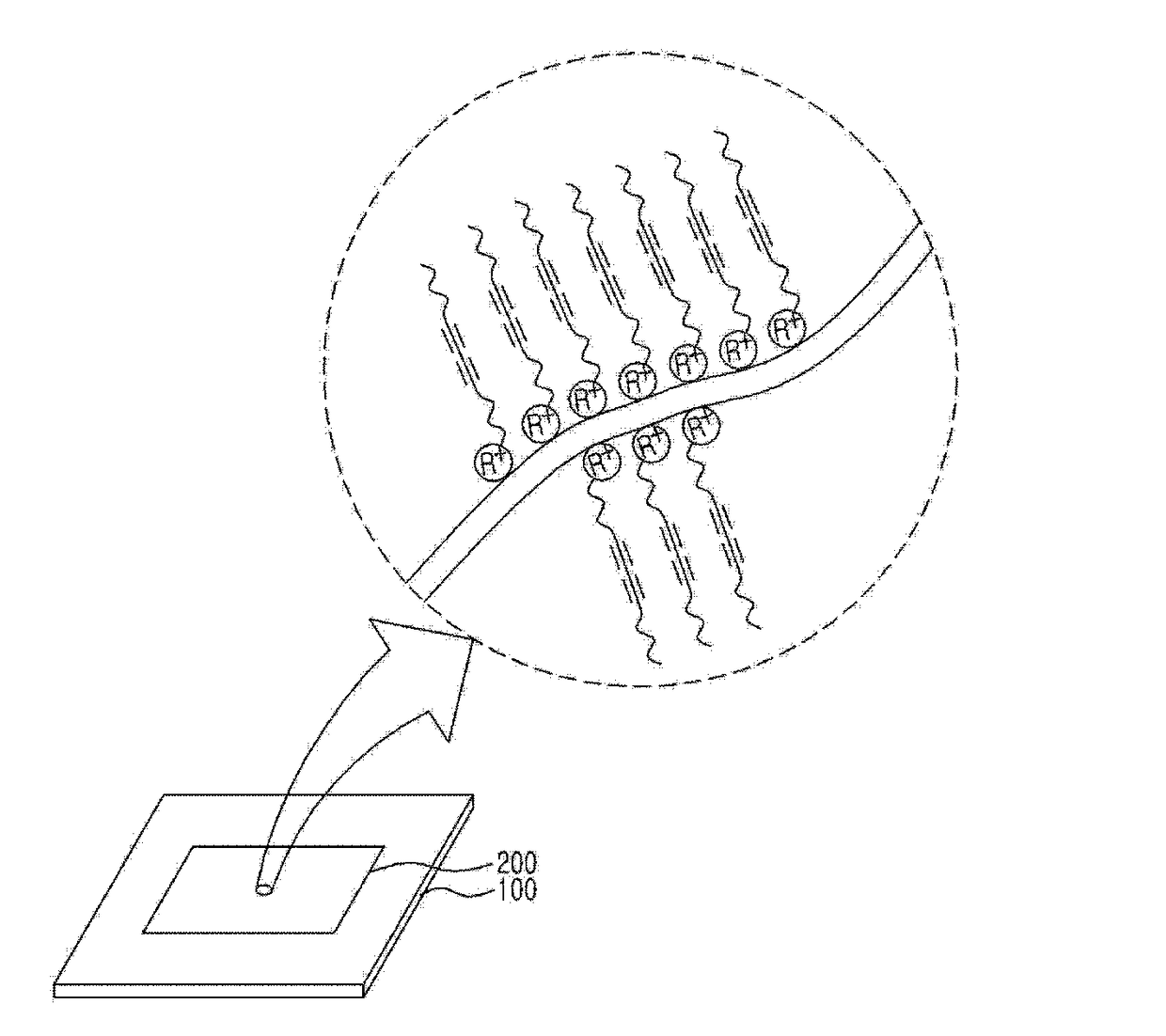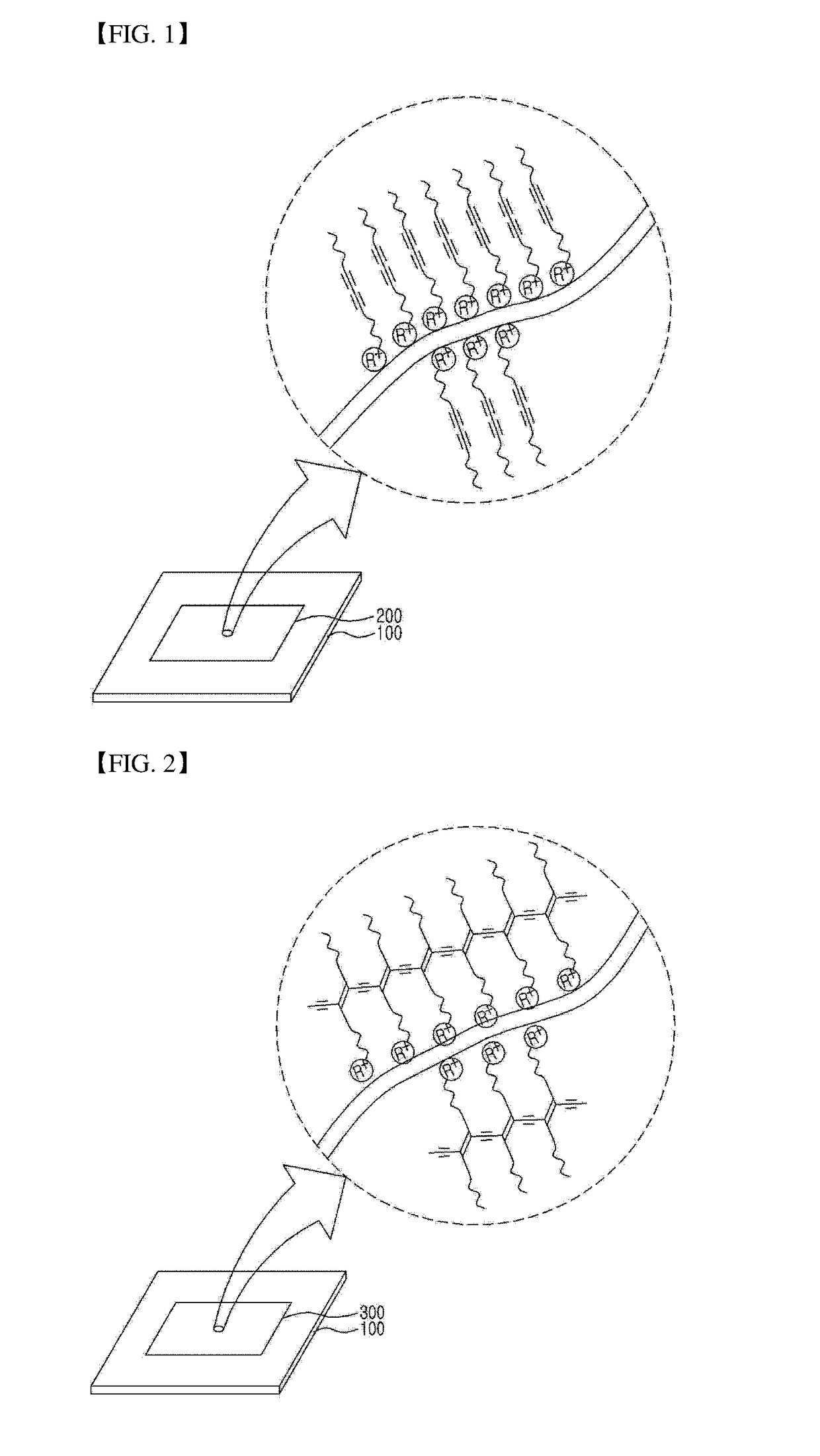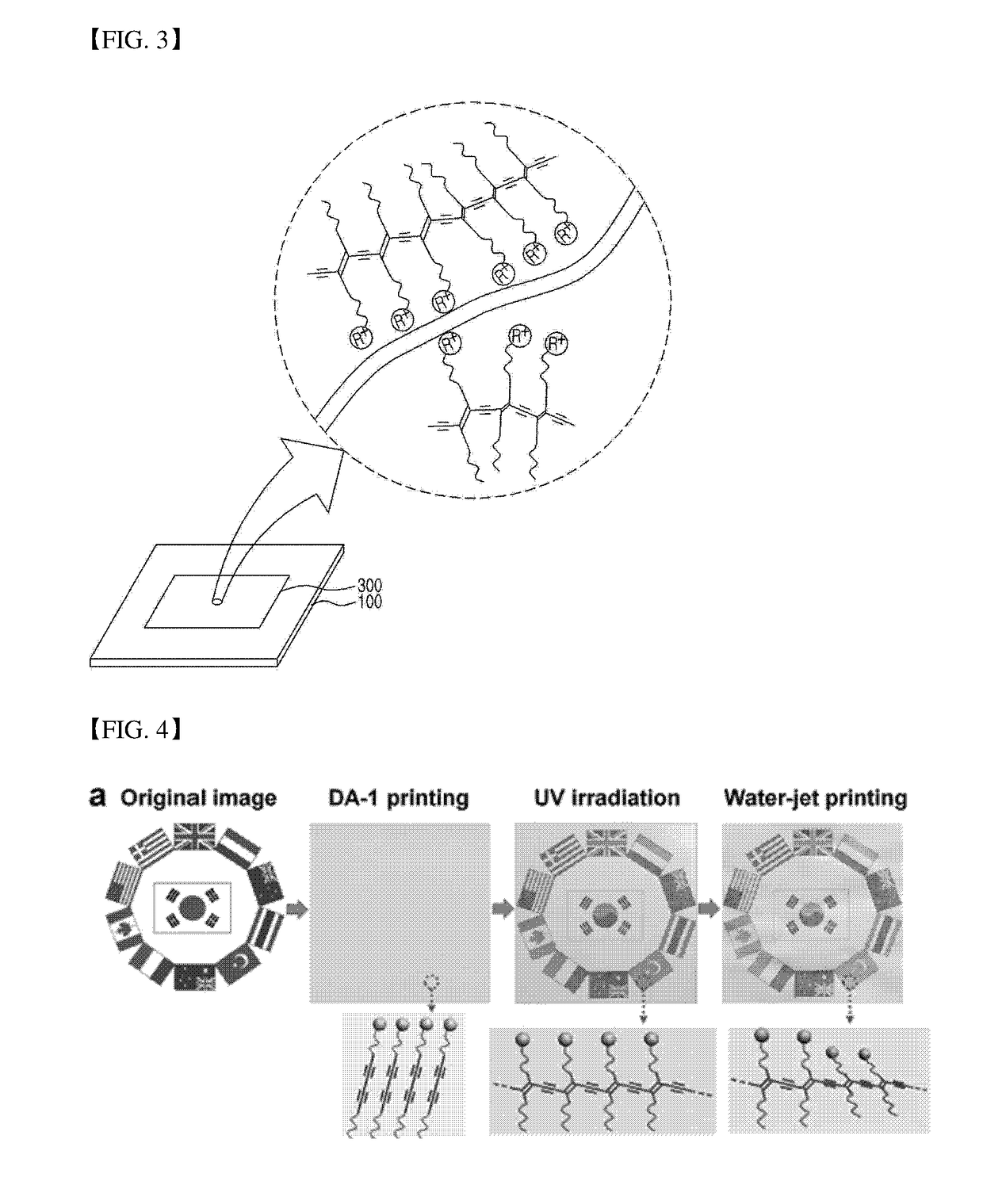Water-based diacetylene ink, hydrochromic polydiacetylene paper prepared using the ink, and use thereof
- Summary
- Abstract
- Description
- Claims
- Application Information
AI Technical Summary
Benefits of technology
Problems solved by technology
Method used
Image
Examples
synthesis example 1
3-(cyanomethyl)-1-(3-(pentacosa-10,12-dienamido) propyl)-1H-imidazol-3-ium bromide]
[0086]
[0087]A solution prepared by dissolving 10,12-pentacosadiynoic acid (PCDA, 0.75 g, 2 mmol), N-hydrosuccinimide (NHS, 0.35 g, 3 mmol), and 1-ethyl-3-(3-dimethylaminopropyl)carbodiimide (EDC, 0.77 g, 4 mmol) in 20 ml of methylene chloride was stirred at room temperature overnight. Subsequently, the solution was concentrated in vacuo, and a residue was re-dissolved in ethyl acetate. The resultant solution was fed along with water into a separatory funnel and was allowed to be separated therein. Subsequently, a separated organic solution layer was separately isolated. The organic solution was dehydrated, and then concentrated in vacuo, thereby obtaining 2,5-dioxopyrrolidin-1-yl pentacosa-10,12-diynoate (PCDA-NHS) as a white powder. PCDA-NHS (0.94 g, 2 mmol) and triethylamine (TEA, 0.51 g, 5 mmol) were dissolved in 10 ml of methylene chloride to obtain a first solution, and 1-(3-aminopropyl)imidazole...
synthesis example 2
3-(Cyanomethyl)-1-(3-(tricosa-10,12-dienamido)propyl)-1H-imidazol-3-ium bromide]
[0089]
[0090]2,5-dioxopyrrolidin-1-yltricosa-10,12-diynoate (TCDA-NHS, 0.89 g, 2.00 mmol) and TEA (0.41 g, 4 mmol) were dissolved in 10 ml of methylene chloride, thereby obtaining a first solution. 1-(3-aminopropyl)imidazole (0.38 g, 3.00 mmol) was dissolved in 10 ml of methylene chloride and then added to the first solution, followed by stirring at room temperature overnight. Subsequently, a residue was obtained through concentration in vacuo, and the residue was fed into a silica gel chromatography column (methylene chloride / methanol, 96 / 4), thereby obtaining N-(3-(1H-Imidazol-1-yl)propyl)tricosa-10,12-dienamide (0.74 g, 82%) as a white solid.
[0091]N-(3-(1H-Imidazol-1-yl)propyl)tricosa-10,12-dienamide (0.32 g, 0.70 mmol) was added to 20 ml of acetonitrile containing bromoacetonitrile (0.13 g, 1.06 mmol), followed by refluxing while stirring overnight. Subsequently, a solid was obtained through concentra...
synthesis example 3
3-(Cyanomethyl)-1-(3-(heptadeca-4,6-dienamido) propyl)-1H-imidazol-3-ium bromide]
[0092]
[0093]2,5-dioxopyrrolidin-1-ylheptadeca-4,6-diynoate (HDDA-NHS, 0.72 g, 2.00 mmol) and TEA (0.41 g, 4 mmol) were dissolved in 10 ml of methylene chloride, thereby obtaining a first solution. 1-(3-aminopropyl)imidazole (0.38 g, 3.00 mmol) was dissolved in 10 ml of methylene chloride, thereby obtaining a second solution. The obtained second solution was added to the first solution, followed by stirring at room temperature overnight. Subsequently, a residue was obtained through concentration in vacuo. The obtained residue was fed into a silica gel chromatography column (methylene chloride / methanol, 96 / 4), thereby obtaining N-(3-(1H-Imidazol-1-yl)propyl)heptadeca-4,6-dienamide (0.57 g, 77%) as a yellow liquid.
[0094]N-(3-(1H-Imidazol-1-yl)propyl)heptadeca-4,6-dienamide (0.26 g, 0.70 mmol) was added to 20 ml of acetonitrile containing bromoacetonitrile (0.13 g, 1.06 mmol), followed by refluxing while st...
PUM
| Property | Measurement | Unit |
|---|---|---|
| Temperature | aaaaa | aaaaa |
| Molar density | aaaaa | aaaaa |
| Concentration | aaaaa | aaaaa |
Abstract
Description
Claims
Application Information
 Login to View More
Login to View More - R&D
- Intellectual Property
- Life Sciences
- Materials
- Tech Scout
- Unparalleled Data Quality
- Higher Quality Content
- 60% Fewer Hallucinations
Browse by: Latest US Patents, China's latest patents, Technical Efficacy Thesaurus, Application Domain, Technology Topic, Popular Technical Reports.
© 2025 PatSnap. All rights reserved.Legal|Privacy policy|Modern Slavery Act Transparency Statement|Sitemap|About US| Contact US: help@patsnap.com



